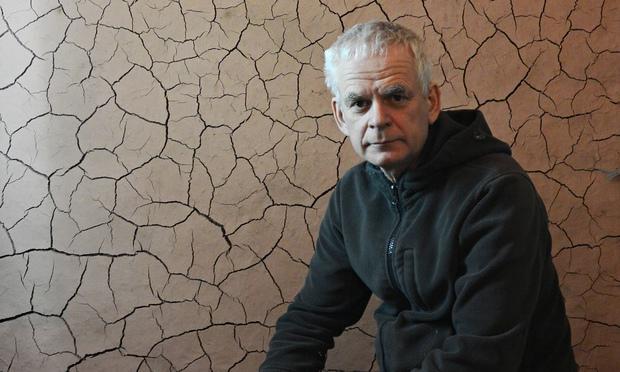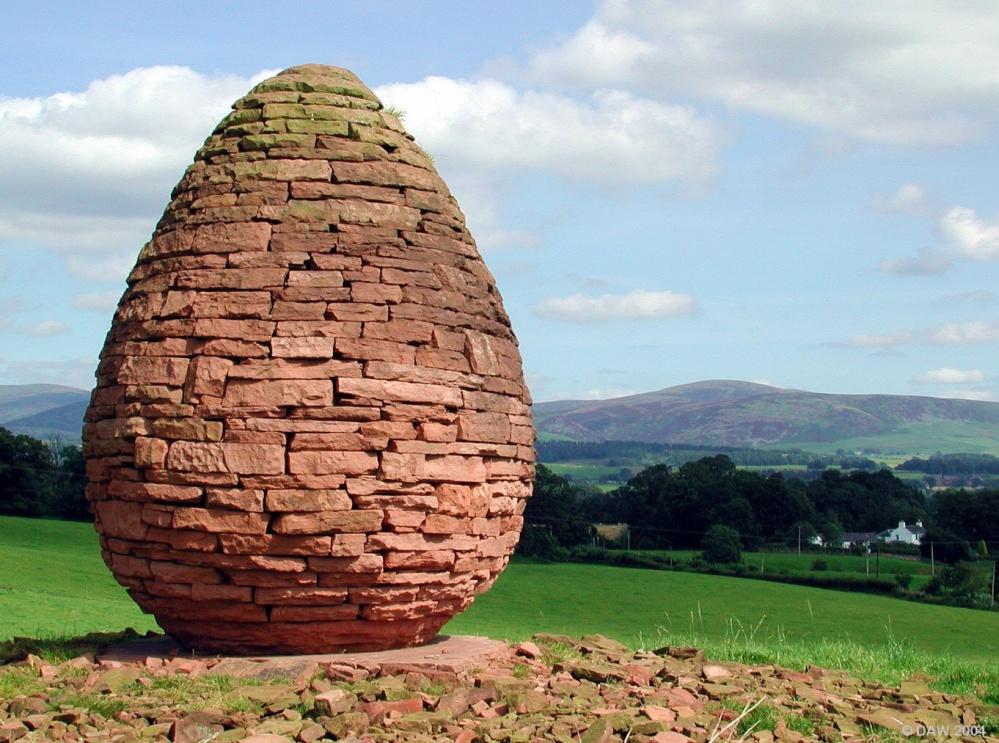The Artist
This paper explores the works and ideas of contemporary artist Andy Goldsworthy. He was born in 1956 in Cheshire, England. Currently, he lives and works in Scotland. Goldsworthy is known as a sculptor and a photographer working within the movement of environmental or land art. This means that all of Goldsworthy’s artworks are mainly made of natural materials such as sand, snow, water, wood, tree leaves, petals, rocks, among others.
Besides, the vast majority of artworks of this sculptor are installed in nature – in the woods, fields, plains, at the ponds, or rivers. Goldsworthy does not think through the details of his artworks, often he leaves home and uses his intuition to find a place where his new creation would be made, when the place is found he uses whatever materials are available around (Andy Goldsworthy par. 3).
The tools he uses are often the materials that can be found around; for example, he would use rocks to break tree branches or his own saliva to make pieces of ice stick together. Goldsworthy’s works are valuable because they have a limited lifetime. They are meant to go through the stags of being born, blossom, and then go into decay.
This artist especially values the effect light makes on his works, this is why many of them need to be finished by a certain hour of the day to properly reveal their intended beauty (Lubow par. 1). Goldsworthy works only with his own hands with the minimal use of tools because, according to his belief, look, touch, shape, place, and material are one when it comes to an artwork; these elements are inseparable in his art (Andy Goldsworthy par. 3).
Artworks
Many of Goldsworthy’s works have never been shown in museums. This artist explains that he has to work on the actual land, out in nature, because of the energy that runs through him, inspiring him to create (Canal de serbotto). His works’ audience includes hitchhikers, tourists, occasional walkers who happen to find them in the forests or at the river banks.
Many of his creations do not have names, but they have a purpose, which is to communicate the value of nature, the beauty of every single moment, the flowing nature of life. Goldsworthy is known for creating “work that disappears.”
A great example of such artwork is his Clay Dome built in Brazil in 2012, based on his Clay Wall artwork created in 1996. The temporary sculpture made of raw clay cracked and adhered right in front of the observers, changing its color and shape hour after hour.

Clay is Goldsworthy’s material of choice when he needs to emphasize the stages of disappearance of his transcendent artwork as it changes day after day; its decay is the main source of beauty.
One more well-known signature sculpture of this artist is a cairn. Goldsworthy’s cairns are made of multiple pieces if limestone found in the natural locations and carefully selected based on their shape, color, and weight in order to build the final sculpture.

The first cairns made by Goldsworthy date back to the 1970s and 1980s, they were made in the parks, at the beaches, or on the hills. Cairns are the symbols of the perfect balance of steadiness and instability. These sculptures take a long time and a lot of patience to make. Some of Goldsworthy’s cairns are currently shown in the museums of Britain.
One more well-known work of Goldsworthy was a project created in collaboration with Greenpeace. Goldsworthy is an active environmentalist, he likes to help Greenpeace with their actions, yet he does not want to make his art too commercial political, this is why his participation is occasional. The Snowball Project of 2000 targeted the people of London. Thirteen gigantic snowballs were placed in the city in the summer.

Snowballs, of course, were meant to melt. Each ball had other materials inside, so as the snow thawed, other shapes started to reveal themselves. The project was designed as a global warming attention raiser (Andy Goldsworthy’s Snowballs Project par. 1).
Goldsworthy’s works, ideas, and general approach towards land art are described in the stunning film called “Rivers and Tides,” which features the artist working on some of his bigger and smaller creations and speaking about the purpose, emotions and through the process behind his artworks.
Conclusion
In conclusion, Andy Goldsworthy is a well-well known contemporary environmentalist and land artist who works within a rare movement collaborating with the forces of nature and going with the flow turning whatever the land provides into mesmerizing artworks. When there is a snowfall, Goldsworthy goes out to build abstract snow sculptures, on a sunny day he works with flickering light and shadows, in autumn he employs fallen leaves of bright colors, and when it rains he uses water. This artist is an ultimate demonstration of never-ending the flow of life and the flexibility of the eye and mind required for its full appreciation.
Works Cited
Andy Goldsworthy. Morning Earth. Web.
Andy Goldsworthy’s Snowballs Project. Greenpeace. 2000. Web.
Canal de serbotto. Andy Goldsworthy, Working with Time – Rivers and Tides. 2014. Web.
Lubow, Arthur. 35 Who Made a Difference: Andy Goldsworthy. 2005. Web.